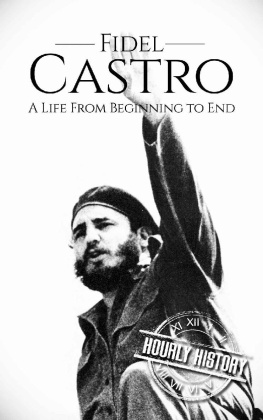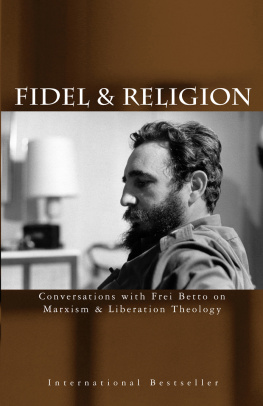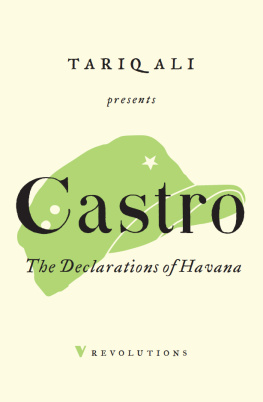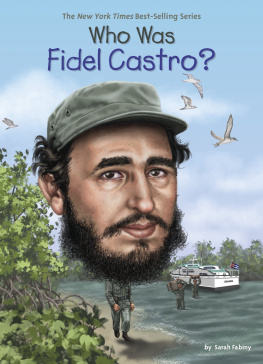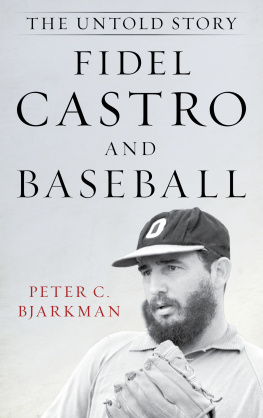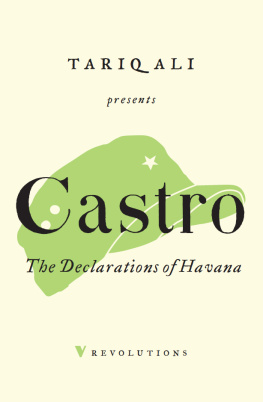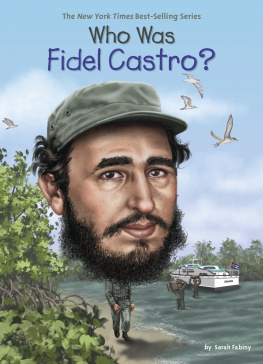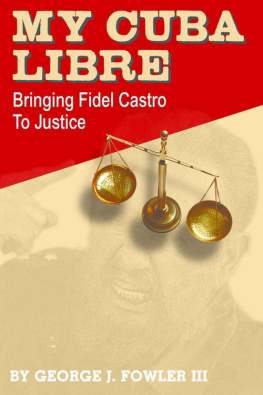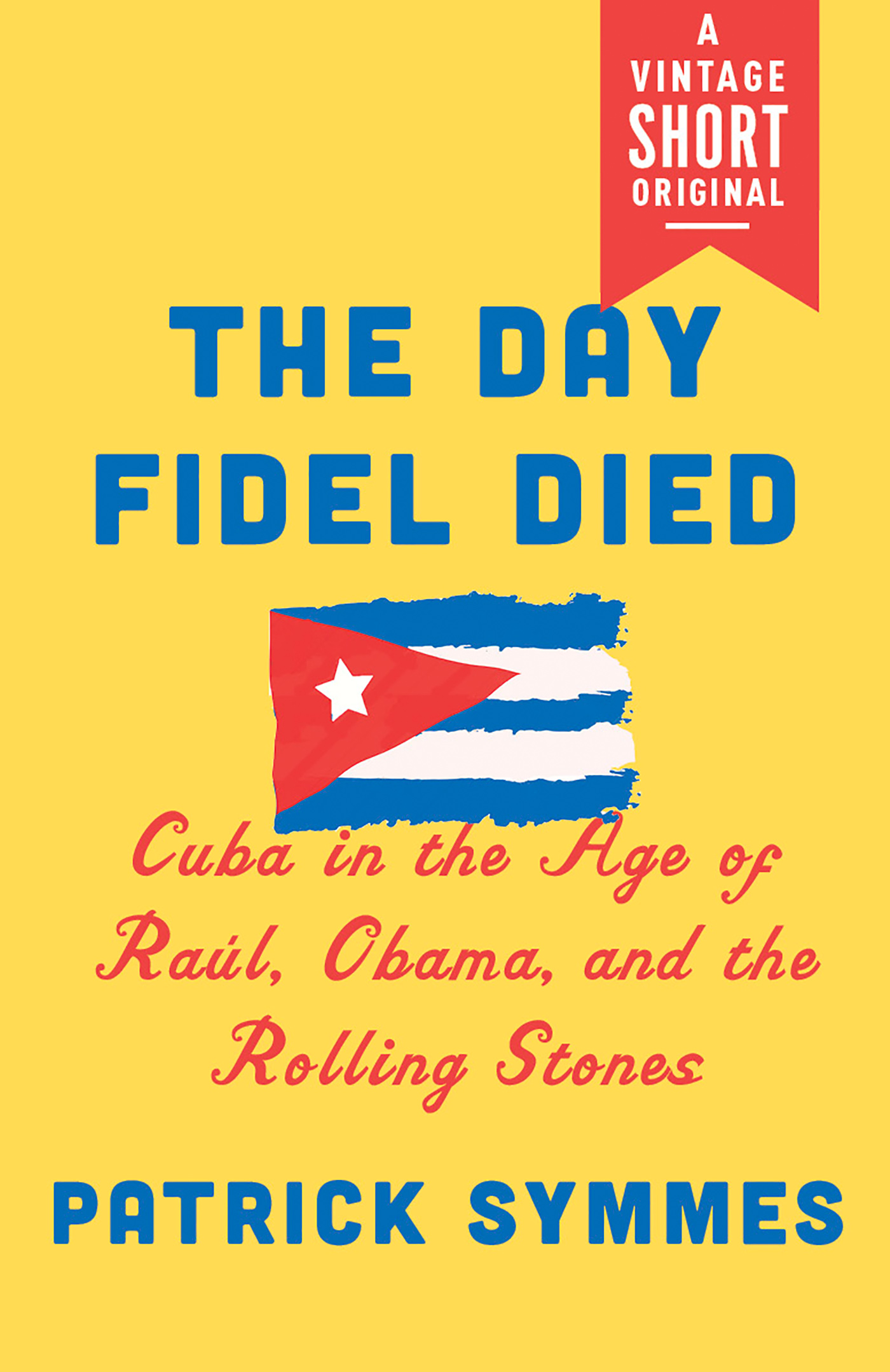All rights reserved. Published in the United States by Vintage Books, a division of Penguin Random House LLC, New York, and distributed in Canada by Random House of Canada, a division of Penguin Random House Canada Limited, Toronto.
Vintage and colophon are registered trademarks of Penguin Random House LLC.
1
C UBA
F RIDAY, M ARCH 27, 2016
The crowd was quiet, almost mournful, as we filed out of the event in velvet darkness. It wasnt even ten P.M. yet, but everyone was spent. Exhausted by the effort required of such a historical moment, stunned by the process of summoning and then releasing decades of pent-up emotions. Hundreds of thousands of Cubans shuffled slowly toward the exits, a sea of depleted faces and passive frames.
It was impossible to gauge the real size of the crowd. The grounds were perfectly flat, so my eye revealed only a thicket of heads, shoulders, and limbs close around me. Certainly the event had exceeded all expectation, the passionate and the curious and the bored all drawn in by the chance to see half a century of waiting come to an end. Cautious estimates beforehand suggested that two hundred thousand might appear at this huge grassy sports ground on the outskirts of Havana; in the actual moment, looking around, I heard people suggesting it was twice that or more, perhaps five hundred thousand. I tried sampling and estimating the crowd, and became sure it was far moreeight hundred thousand. Later, probably exaggerating for effect, the organizers themselves estimated the crowd at 1.2 millionthat would be one in ten Cubans gathered in a single purgative moment of unity.
So ended the first-ever show in Cuba by the Rolling Stones. Two turgid hours of landmark cultural collision now unwound in a slow, frustrating reversal of the human tide. There were only a few narrow exits in this tightly controlled society. Just getting to the closest one took my friend Ernesto and me half an hour.
Finally, squeezed dangerously and increasingly hemmed in on all sides by the pressure of tens of thousands, we approached the narrow gate in the tall iron fence around the huge field. People stood packed together, silent, shuffling forward by inches. Only one group of testosterone-infused boys had the energy to cause problems, and they seemed to relish their separate, noisy status in the crowd. Whooping and laughing, they shoved ahead, a little phalanx of aggression, laughing at those who tried to hold their place. The adolescents were in high spirits and shouted things to one another that were too fast for my Spanish. But then they broke into a little improvised chant, which ended with a refrain I caught easily:
Who made this possible?
Obama made this possible!
Who made this possible?
Obama made this possible!
Who made this
I looked ahead and saw why they had fallen silent. A squad of about twenty police officers waited for us outside the gate. The boys were now as timid as the rest of the crowd, put their heads down, and stopped pushing. Ernesto and I finally squeezed through the exit, shoulder to shoulder, sweating not from effort but from the heat of the bodies around us. Slowly the pressure released, and with tiny, restricted steps we ambled past the police and then a single rusting portable toilet with a line of more than thirty women waiting.
We were in an access road now, one that ran out from this track-and-field venue toward a traffic circle that linked five broad avenues. There were hundreds of thousands of people in front of me, and hundreds of thousands behind. But only eight buses waited in a line, their engines off, all of them already packed with would-be passengers. We filed past the buses. There were no taxis or cars other than police cars, for the zone around the concert had been closed to traffic hours before the show.
I guess we are walking, Ernesto said.
Ernestos sister was married to a friend of mine in America. Over two decades I had occasionally rented a rooftop room from him, making it the center of my journalistic surveys of Cuban life. The house was about seven miles from here.
Ragged columns of people were peeling off from the traffic circle in all directions, armies of the night heading for the western suburbs, cohorts hoping to get south to the gritty exurb of Arroyo Naranjo, others ambling home in every direction. There was nowhere to be, nor was there any way to get there. We set off north, toward central Havana, with perhaps four hundred thousand other people.
The crowd wasnt quite silent, but it was subdued, with no one ready to discuss what they had just seen. In the dark I heard Dutch, Italian, and British voicesmore foreigners than I had ever seen in Cuba. There were some Japanese and a steady trickle of Americans, mostly from the older generation of Stones fans. We fell into step for a while with four young blond Norwegians, one of them a strongly built young woman who soon outpaced me despite wearing gold sandals covered in fake jewels.
Mile by mile the crowd thinned outsome falling behind, others race-walking ahead, rivulets of people flowing down side streets. We left the closed zone behind, and a few curvaceous old cars reappeared, charging ten dollars a person for a ride into Havana. Where the avenue dipped, men appeared, directing the column of pedestrians into the right lane. They werent police officers. They wore crisp green fatigues, with red berets and TROPA ESPECIAL emblazoned on their name tabs. We squeezed through an underpass, and I realized we were walking at the center of the machine. The entire ragged column, looking more like refugees than music fans, was passing underneath the walls of the Council of State, the fortress-like building where first Fidel and now Ral sat at a desk and commanded the nation.
Thats the Council of
Dont point, Ernesto said sharply. I put my finger down.
We could hear short blasts of whistles. As we emerged from the underpass, we saw the asphalt Plaza de la Revolucin ahead on the left, with Che Guavaras famous and emotive face outlined in neon across the front of the Ministry of Interior. There was a tall office block on our right. The source of the whistle blasts was a soldier standing on the grass just above the sidewalk. He blew another short, sharp blast. Europeans walked in the traffic lanes. Assuming the whistle was meant for them, they jumped back onto the sidewalk. But Ernesto knew the real issue. No photos, he said. The foreigners were popping off flash pictures of the neon Che and of one another as they passed the most sensitive buildings in Cuba. I could hear more trilling whistle blasts ahead. We passed the grassy slope in front of a building and half a dozen more soldiersall in red berets, with SPECIAL FORCES clearly indicated next to their name tabs. They were just standing there, spread out, holding whistles.


